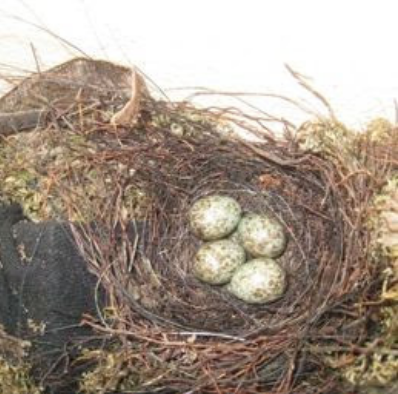The oriental jaybird robin (Copsychus saularis) is a little passerine feathered creature that was some time ago classed as an individual from the thrush family Turdidae, yet now thought about an Old World flycatcher. They are particular high contrast winged animals with a long tail that is held upright as they scrounge on the ground or roost obviously. Happening crosswise over the majority of the Indian subcontinent and parts of Southeast Asia, they are regular winged creatures in urban gardens and additionally backwoods. They are especially outstanding for their tunes and were once prominent as cagebirds. The oriental jaybird robin is the national fowl of Bangladesh
Description :- This species is 19 centimeters (7.5 in) long, including the long tail, which is normally held positioned upright. It is comparative fit as a fiddle to the littler European robin, yet is longer-followed. The male has dark upperparts, head and throat separated from a white shoulder fix. The underparts and the sides of the long tail are white. Females are grayish dark above and grayish white. Youthful fowls have flaky dark colored upperparts and head. It is the national winged creature of Bangladesh.
The designate race is found on the Indian subcontinent and the females of this race are the palest. The females of the Andamans race andamanensis are darker, heavier-charged and shorter-followed. The Sri Lankan race ceylonensis (some time ago incorporated the Peninsular Indian populaces south of the Kaveri River[2]) and southern choose people have the females about indistinguishable to the guys in shade. The eastern populaces (Bhutan and Bangladesh) have more dark on the tail and were once in the past named erimelas.[3] The populaces in Burma and further south are named as race musicus.[4] various different races have been named over the range including prosthopellus (Hong Kong), nesiotes, zacnecus, nesiarchus, masculus, pagiensis, javensis, problematicus, amoenus, adamsi, pluto, deuteronymus and mindanensis.[5] However a considerable lot of these are not very much checked and the status of some are disputed.[6] Some like mindanensis have been currently been perceived for the most part as full species (Philippine jaybird robin).[7] There is more geographic variety in the plumage of females than in that of the males.[8]
It is for the most part observed near the ground, jumping along branches or rummaging in leaf-litter on the ground with a positioned tail. Guys sing uproariously from the highest point of trees or other high roosts amid the reproducing season
Etymology:- The Indian name of dhyal or dhayal has prompted numerous perplexities. It was first utilized by Eleazar Albin ("dialbird") in 1737 (Suppl. N. H. Winged creatures, I. p. 17, pls. xvii. xviii.), and Levaillant (Ois. d'Afr. iii. p. 50) thought it alluded to a sun dial and he called it Cadran. Thomas C. Jerdon composed (B. India, ii. p. 1l6) that Linnaeus,[9] supposing it had some association with a sun-dial, called it solaris, by lapsus pennae, saularis. This was however distinguished by Edward Blyth as a wrong understanding and that it was a Latinization of the Hindi word saulary which implies a "hundred melodies". A male winged animal was sent with this Hindi name from Madras by specialist Edward Buckley to James Petiver, who initially depicted the species (Beam, Synops. Meth. Avium, p. 197)
Behaviour and ecology :- Jaybird robins breed essentially from Spring to July in India and January to June in south-east Asia. Guys sing from high roosts amid romance. The show of the male includes puffing up the plumes, raising the bill, fanning the tail and strutting.[2] They settle in tree hollows or specialties in dividers or building, regularly embracing home boxes. They line the hole with grass. The female is associated with the vast majority of the home building, which occurs about seven days before the eggs are laid. Four or five eggs are laid at interims of 24 hours and these are oval and typically light blue green with tanish dots that match the shade of feed. The eggs are hatched by the female alone for 8 to 14 days.[13][14] The homes are said to have a trademark odour.[15]
Adolescent with textured markings (Sri Lanka)
Females spend more exertion on sustaining the youthful than guys. Guys are very forceful in the rearing season and will guard their territory.[16] and react to the singing of gatecrashers and even their reflections.[17] Guys invest more energy in settle defense.[18] Investigations of the winged creature tune demonstrate dialects[19] with neighbors fluctuating in their melodies. The calls of numerous different species might be imitated as a major aspect of their song.[20][21] This may show that flying creatures scatter and are not philopatric.[22] Females may sing quickly within the sight of a male.[23] Separated from their tune, they utilize a scope of calls including regional calls, development and perching calls, risk calls, accommodating calls, asking calls and trouble calls.[24] The normal mobbing calls is an unforgiving murmuring krshhh.[2][3][25]
The eating routine of jaybird robins incorporates predominantly creepy crawlies and different spineless creatures. Albeit basically insectivorous, they are known to sometimes take blossom nectar, geckos,[26][27] leeches,[28] centipedes[29] and even fish.[30]
They are frequently dynamic late at dusk.[3] They once in a while bathe in water gathered on the leaves of a tree
In culture :- Doyel Chattar, Dhaka
Jaybird robins were broadly kept as cagebirds for their singing capacities and for battling in India in the past.[38] They keep on being in the pet exchange parts of Southeast Asia.
The jaybird robin is the national fowl of Bangladesh, where it is normal and known as the doyel or doel (Bengali: দোয়েল).[39] It is a generally utilized image in Bangladesh, showing up on money notes, and a point of interest in the city of Dhaka is named as the Doyel Chattar (which means: Doyel Square).[40][41]
In Sri Lanka this fowl is called Polkichcha



